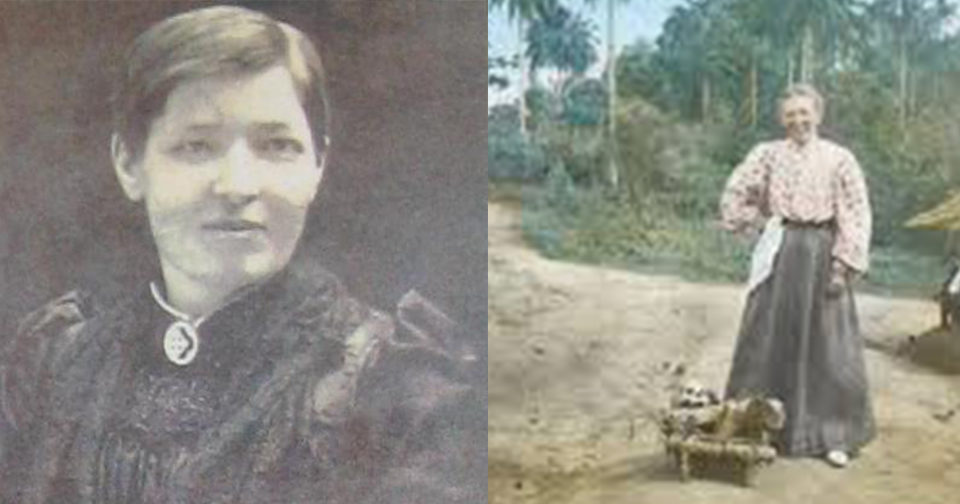History of Christian Missions: Mary Slessor

This is the sixth in our series on Scotland’s involvement in the Great Century of Christian Missions. Today, we’re looking at another missionary who played a part in the movement.
Born in Aberdeen in 1848, Mary Slessor was a forerunner for hard-working female missionaries in pioneer work on the continent of Africa. “Exploration and pioneer work was not even an option for a single female missionary – until Mary Slessor arrived on the scene.”[1] Slessor’s father was an alcoholic and his drinking was a contributing factor to her role as the primary breadwinner in her home from age of fourteen. Her life in Dundee would prepare her for the arduous tasks that awaited her in Africa. Water and sanitation were lacking and public health issues saturated streets, factories, and homes.
“It would have been difficult for God or man to have found a better place than the slums of Dundee to prepare Mary for the conditions under which she was to work in Africa.”[2] She successfully navigated the balance between providing for her family and furthering her studies by attending night school after long days in the factory.
Like John Paton, Slessor had an impactful ministry in Scotland, primarily with local youth missions. Her zeal for evangelism and her no-nonsense attitude impacted a generation of young children in Dundee.[3] Beginning in 1866, Mary read copies of The Missionary Record, which included accounts of David Livingstone’s work in Africa. Livingstone became a hero to Slessor and she modeled her continued education and future pioneer work after him. When Livingstone died, Mary was twenty-five years old. She resolved to take the baton from him. Livingstone’s challenge rang in ears and moved her heart, “I direct your attention to Africa. I know that in a few years I shall be cut off in that country which is now open… Do not let it be shut again. Do you carry out the work I have begun. I leave it with you.”[4]
Slessor sailed for Africa in 1876 and, while set on pioneer work in the interior of Africa, she was forced to wait several years before she could move away from the city. Eventually, she moved to a more remote area where she traveled from village to village and share the gospel. Her ministry activities also included overseeing schools, medical projects, and serving as a mother for orphaned children. Slessor, hardened by experiences at home with her alcoholic father and gangs of boys in Scotland, stood against those who murdered children according to the traditions of their culture.
“Customs decreed that a twin birth was a curse. In many cases both babies were killed, and the mother was exiled to an area reserved for outcasts. Slessor not only rescued twins and ministered to their mothers, but also fought the perpetrators, sometimes risking her own life.”[5]
Slessor was a pioneer in contextualization, refusing to live in comparatively comfortable lodgings in the city. Rather, she was more comfortable in a mud hut amongst the African people in the villages of Nigeria. Mary was ahead of her time, “because she identified herself with the people years before this was seen to be an essential in mission work.”[6]
Not only was Slessor a pioneer in missions methodology, she was also a pioneer in establishing single, hard-working women as a powerful missions force for taking the gospel to the nations. Her work and her communications inspired a number of individuals in Scotland to support and contribute to missions work, many who apart from Slessor’s influence may not have considered the work to be done.[7]
[1]Ruth A. Tucker, From Jerusalem to Irian Jaya: A Biographical History of Christian Missions 2nd ed. (Grand Rapids, MI: Zondervan, 2004), 170.
[2]James Buchan, The Expendable Mary Slessor (Edinburgh, UK: Saint Andrews Press, 1980), 9.
[3]Jeanette Hardage, Mary Slessor – Everybody’s Mother: The Era and Impact of a Victorian Missionary (Eugene, OR: Wipf & Stock, 2008), 8-9.
[4]Ibid., 21.
[5]Tucker, From Jerusalem to Irian Jaya, 172.
[6]Buchan, The Expendable Mary Slessor, 245.
[7]W.P. Livingstone, Mary Slessor of Calabar: Pioneer Missionary, 7th ed. (London, UK: Hodder and Soughton, 1916), 344.
Want More Content Like This?
We will deliver Reaching & Teaching articles and podcast episodes automatically to your inbox. It's a great way to stay on top of the latest news and resources for international missions and pastoral training.
